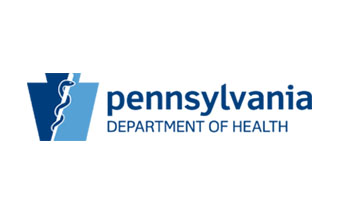COVID-19 Update for Wednesday, December 2
The following is the latest COVID-19 information from the state and federal governments as of 2:45 p.m. on Wednesday, December 2.
Pennsylvania Update
Governor Wolf
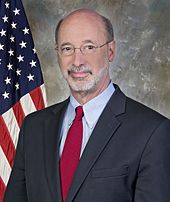 Governor Wolf has renewed his COVID-19 public health emergency declaration. See the announcement of the renewal here and go here to see the declaration itself.
Governor Wolf has renewed his COVID-19 public health emergency declaration. See the announcement of the renewal here and go here to see the declaration itself.- On Tuesday the governor posted a message on Twitter stating that “PA is projected to run out of ICU beds this month.”
- Governor Wolf and the Department of Health have extended the state’s contract with a vendor to perform COVID-19 testing throughout the state. Over the next 12 weeks, five teams will provide testing in 61 counties – counties without their own health departments; the six counties not receiving this testing have their own health departments that perform testing. Work begins immediately, with testing available from December 2 through December 6 in Bedford, Mifflin, Tioga, and Northampton counties and from December 4 through December 8 in Butler County. Learn more about this new testing initiative in this news release from the governor’s office.
Department of Health
The Department of Health has updated its interim guidance for skilled nursing facilities to incorporate new state and federal guidance issued since the last update on October 13, 2020.
The Department of Health issued a health advisory with guidance for long-term-care facilities on testing and managing residents with acute respiratory illness symptoms when COVID-19 and influenza viruses are both circulating.
Department of Health – by the numbers
 Pennsylvania’s number of COVID-19 cases today surpassed 375,000.
Pennsylvania’s number of COVID-19 cases today surpassed 375,000.- More than 10,500 Pennsylvanians have now died from COVID-19. The past two days have had the two highest single-day death totals in the state since the pandemic began.
- More than 36,000 residents of long-term-care facilities and more than 6800 people who work in those facilities have contracted COVID-19. Those figures encompass 1289 facilities in 65 of Pennsylvania’s 67 counties.
- More than 14,800 health care workers in the state have contracted COVID-19.
- The number of people currently hospitalized with COVID-19 has doubled since November 16. The Department of Health reports that “Most of the patients hospitalized are ages 65 or older…”
- The number of COVID-19 patients currently breathing with the help of a ventilator has doubled since November 17.
- More than 1000 Pennsylvanians are currently in hospital adult intensive care units being treated for COVID-19.
- 16 percent of hospital adult ICU beds are currently unoccupied, as are 15 percent of medical/surgical beds, 41 percent of pediatric beds, 17 percent of pediatric ICU beds, and 32 percent of airborne isolation unit beds.
- The state-wide positivity rate on COVID-19 tests rose from 11.1 percent two weeks ago to 11.7 percent last week, according to the early warning dashboard released weekly by the governor and Department of Health. Sixty-six of Pennsylvania’s 67 counties have positivity rates greater than five percent; five counties – Juniata, Mifflin, Bedford, Somerset, and Tioga – had positivity rates greater than 20 percent.
- A positivity rate greater than five percent is considered “concerning,” Department of Health Secretary Levine has explained in the past.
- That same dashboard shows that 66 of the state’s 67 counties exhibited “substantial levels of community transmission” last week, up from 59 of 67 counties the previous week.
- In light of the growing number of COVID-19 cases, the Department of Health is now prioritizing case investigations. As a result, the number of successful contract-tracing efforts was 22 percent last week, up from 10 percent the previous week.
- Of the confirmed cases reported between November 15 and November 21 in which contact tracing was successful, only one percent said they visited a business establishment 14 days prior to the onset of symptoms (down from 13 percent two weeks ago). Drilling down on this data, the dashboard reports that
Compared to data reported on November 23, this week’s data indicated an increase for people who reported going to a restaurant (51 percent vs. 48 percent last week), going to a salon/barbershop (8 percent vs. 7 percent last week), and slight increases for those going to some other business (24.5 percent vs. 24 percent last week) and going to a bar (15.3 percent vs. 15 percent last week). The data saw a decrease for people who reported going to a gym/fitness center (10 percent vs. 14 percent last week). The number of those who attended a mass gathering or other large event decreased to 13 percent from 16.3 percent last week.
In addition, 16 percent of respondents said they had attended a mass gathering or other large event 14 days prior to onset of symptoms; two weeks ago, that figure was nearly 19 percent.
Around the State
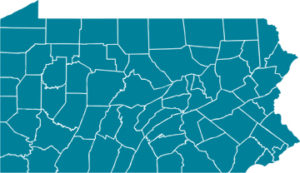 The Philadelphia Inquirer reported on Monday that “788 patients with COVID-19 were hospitalized in Philadelphia as of Monday… up 48% since Nov. 18, when 530 coronavirus patients were in the hospital. 69 patients were on ventilators.”
The Philadelphia Inquirer reported on Monday that “788 patients with COVID-19 were hospitalized in Philadelphia as of Monday… up 48% since Nov. 18, when 530 coronavirus patients were in the hospital. 69 patients were on ventilators.”- Across the state, the Pittsburgh Tribune-Review reported late last week that “A staggering rise in new covid-19 cases in Allegheny County means fewer people will receive calls from case investigators who have been overwhelmed with the rapid increase, Allegheny County Health Director Dr. Debra Bogen said Friday. On Thursday and Friday, the county recorded a combined 1,642 new cases – more than the total number of new cases in May and June combined.”
- In response, Pittsburgh’s public safety department has formed a task force to enforce new state COVID-19 restrictions. The Tribune-Review reports that according to a policy spokesperson, the task force, requested by the city’s mayor, will “…conduct random, unannounced compliance checks at various businesses… All violations will be documented. In addition, police officers on regular patrol will respond to all complaints for violations of the Governor’s order.”
- During a Monday news briefing, according to the Pennsylvania Capital-Star, “State Health Secretary Dr. Rachel Levine said the number of hospitalized individuals was a record, higher than totals in spring.”
Department of Human Services
- DHS has published guidelines describing steps providers of in-home services can take to mitigate the possible transmission of COVID-19.
- DHS’s Office of Long-Term Living and Office of Developmental Programs have updated their guidance on COVID-19 for personal care homes, assisted living residences, and intermediate care facilities.
- DHS’s Office of Developmental Programs has published guidance for agencies and facilities providing life-sharing services during the COVID-19 pandemic.
Department of State
 The Department of State has extended until 90 days after the governor’s COVID-19 emergency declaration ends all temporary practice permits issued by the State Board of Nursing for RNs and PNs (licensees from other states who may or may not still need to be examined) and graduate temporary permits for RNs and PNs (graduates of nursing education programs who have yet to be examined) that were in effect on March 6, 2020 unless (1) the temporary practice permit holder was subsequently issued a license after March 6, 2020 or (2) the temporary practice permit holder subsequently failed the licensure examination after March 6, 2020. See the Department of State’s notice here.
The Department of State has extended until 90 days after the governor’s COVID-19 emergency declaration ends all temporary practice permits issued by the State Board of Nursing for RNs and PNs (licensees from other states who may or may not still need to be examined) and graduate temporary permits for RNs and PNs (graduates of nursing education programs who have yet to be examined) that were in effect on March 6, 2020 unless (1) the temporary practice permit holder was subsequently issued a license after March 6, 2020 or (2) the temporary practice permit holder subsequently failed the licensure examination after March 6, 2020. See the Department of State’s notice here.
Federal Update
Centers for Medicare & Medicaid Services
- CMS has announced the introduction of two new Medicare condition codes that will take effect for claims received on or after February 1, 2021: one to enable providers to report when a service is provided as part of Expanded Access approval and another to enable providers to report when the service is provided as part of an Emergency Use Authorization. Find an article about the new codes here in MLN Matters, CMS’s online publication.
- CMS has updated its compendium of COVID-19 emergency declaration of blanket waivers for health care providers with new information about its Medicare ground ambulance data collection system; see page 31 for details.
- CMS has updated its COVID-19 FAQs on Medicare fee-for-service billing with a new section for Indian Health Services hospitals (see pages 150-151).
Department of Health and Human Services
- HHS’s Office of the Assistant Secretary for Preparedness and Response has compiled a new hospital operations toolkit for COVID-19. It covers capacity, patient care policies and processes, infection prevention and control, and administration.
- HHS’s Office of the Assistant Secretary for Preparedness and Response will host a webinar titled “Crisis Standard of Care and COVID-19: What’s Working and What Isn’t” on Thursday, December 3 at noon (eastern). Speakers will discuss clinical consultation versus triage support, systems-level information sharing, coalition-level coordination activities, and recent publications/resources to help with COVID-19 planning efforts. Go here to learn more about the webinar and how to register for it.
Food and Drug Administration
- The FDA has reissued its August 23, 2020 emergency use authorization (EUA) for the emergency use of COVID-19 convalescent plasma for the treatment of hospitalized patients with COVID-19.
Centers for Disease Control and Prevention
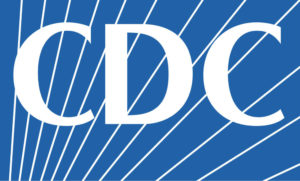 The CDC has updated its guidance on appropriate periods of time to quarantine for people who believe they have been exposed to individuals with suspected or confirmed COVID-19. The new guidance calls for briefer quarantine periods.
The CDC has updated its guidance on appropriate periods of time to quarantine for people who believe they have been exposed to individuals with suspected or confirmed COVID-19. The new guidance calls for briefer quarantine periods.- The CDC’s Advisory Committee on Immunization Practices (ACIP) has adopted the following resolution (scroll down to find it) about the administration of COVID-19 vaccines:
When a COVID-19 vaccine is authorized by FDA and recommended by ACIP, vaccination in the initial phase of the COVID-19 vaccination program (Phase 1a) should be offered to both 1) health care personnel and 2) residents of long-term care facilities.
- The CDC has updated its information on managing pregnant patients with confirmed or suspected COVID-19.
- The CDC has updated its guidance on assessing COVID-19 risk factors and why risk factors matter.
- The CDC has updated its data on COVID-19-related cases, hospitalizations, and deaths by race and ethnicity.
- The CDC has updated its guidance for expanded testing to help reduce the spread of COVID-19.
- The CDC has updated its information with guidance and resources for laboratories that perform COVID-19 tests.
- The CDC has published a new edition of its COVID-19 Science Update.
National Institutes of Health
- The NIH has updated its guidelines on the testing, treatment, and management of COVID-19 patients.
Government Accountability Office
 The GAO has examined the federal response to the COVID-19 public health emergency, describing the impact of the pandemic and the government’s response to it while identifying shortcomings in that response and recommending ways to address those shortcomings. Learn more from the GAO report “COVID-19: Urgent Actions Needed to Better Ensure an Effective Federal Response.”
The GAO has examined the federal response to the COVID-19 public health emergency, describing the impact of the pandemic and the government’s response to it while identifying shortcomings in that response and recommending ways to address those shortcomings. Learn more from the GAO report “COVID-19: Urgent Actions Needed to Better Ensure an Effective Federal Response.”
Resources to Consult
Pennsylvania Department of Human Services
Pennsylvania Department of Health
Centers for Disease Control and Prevention
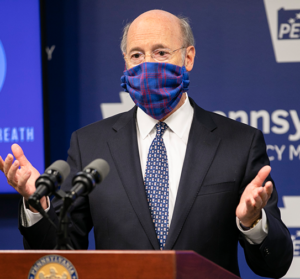 Governor Wolf/Department of Health
Governor Wolf/Department of Health Pennsylvania’s number of COVID-19 cases today surpassed 321,000.
Pennsylvania’s number of COVID-19 cases today surpassed 321,000.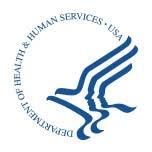 HHS has announced plans to allocate doses of the investigational monoclonal antibody therapeutics casirivimab and imdevimab for treatment of non-hospitalized patients with mild or moderate confirmed cases of COVID-19 at high risk of hospitalization; this is often referred to publicly as the Regeneron antibody cocktail. HHS will allocate 300,000 federally-purchased doses to state and territorial health departments that will determine which health care facilities receive the infusion drug. Weekly allocations of the drug will be proportionally based on confirmed COVID-19 cases in each state and territory over the previous seven days based on data that hospitals and state health departments enter into the HHS Protect data collection platform. Learn more from
HHS has announced plans to allocate doses of the investigational monoclonal antibody therapeutics casirivimab and imdevimab for treatment of non-hospitalized patients with mild or moderate confirmed cases of COVID-19 at high risk of hospitalization; this is often referred to publicly as the Regeneron antibody cocktail. HHS will allocate 300,000 federally-purchased doses to state and territorial health departments that will determine which health care facilities receive the infusion drug. Weekly allocations of the drug will be proportionally based on confirmed COVID-19 cases in each state and territory over the previous seven days based on data that hospitals and state health departments enter into the HHS Protect data collection platform. Learn more from  The FDA has issued emergency use authorization for emergency use of baricitinib (Olumiant), in combination with remdesivir (Veklury), for use by health care professionals in the treatment of suspected or laboratory-confirmed COVID-19 in certain hospitalized patients requiring supplemental oxygen, invasive mechanical ventilation, or extracorporeal membrane oxygenation (ECMO). See
The FDA has issued emergency use authorization for emergency use of baricitinib (Olumiant), in combination with remdesivir (Veklury), for use by health care professionals in the treatment of suspected or laboratory-confirmed COVID-19 in certain hospitalized patients requiring supplemental oxygen, invasive mechanical ventilation, or extracorporeal membrane oxygenation (ECMO). See  In the letter, SNAP wrote that
In the letter, SNAP wrote that The Department of Health has released its “
The Department of Health has released its “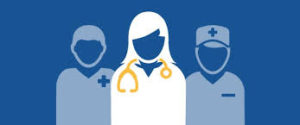 The Provider Relief Fund web page has been
The Provider Relief Fund web page has been  CMS has published
CMS has published  The CDC has published a
The CDC has published a  The Department of Health updated its
The Department of Health updated its  The number of people currently hospitalized with COVID-19 has doubled since late last month.
The number of people currently hospitalized with COVID-19 has doubled since late last month.
 During a news conference this week, Secretary Levine noted that Pennsylvania is now seeing more COVID-19 “long-haulers”: people who continue to experience COVID-19 symptoms over a period of months.
During a news conference this week, Secretary Levine noted that Pennsylvania is now seeing more COVID-19 “long-haulers”: people who continue to experience COVID-19 symptoms over a period of months. Department of Human Services
Department of Human Services
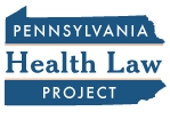 Included in this month’s edition are articles about:
Included in this month’s edition are articles about: